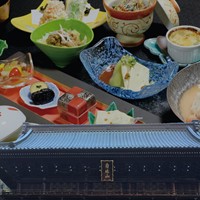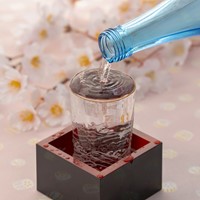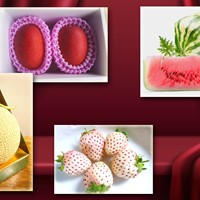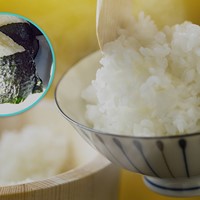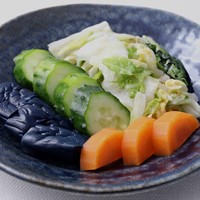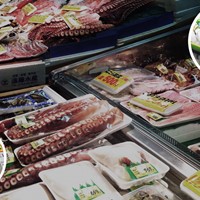Wagashi: Traditional Japanese Sweets

This page contains affiliate links.
Wagashi are traditional Japanese sweets with a great balance of artistic expression and adherence to tradition. Often made to accompany green tea, they can be seen as a distinct aspect of Japanese culture and identity. There are various types of wagashi, most of which utilize traditional flavors and techniques. Their presentation and appearance are considered just as important as their taste, and over time, the presentation of wagashi has evolved to become an art form of its own. Here we will look into some of the popular types of wagashi in Japan, its history, as well as compare traditional Japanese sweets with Western confectionery.
Whether you are an expatriate living in Japan or a tourist visiting the land of the rising sun, enjoying Japanese traditional sweets or wagashi is a very delicious way to explore Japanese culture. If you are also interested in learning about very affordable Japanese sweets with nostalgic charm, please read "A Closer Look at Dagashi: Japan’s Nostalgic Sweets". We also have many other articles covering Japanes food such as kakigori, oden, nabe, natto, and more.
History of Wagashi

Wagashi have been part of Japanese culture for centuries. The term was first coined in the Meiji period as a means to differentiate the confections from Western sweets, as Japan was ending its isolationist period at that time. However, wagashi existed long before then. Its history goes all the way back to Jomon Period (10,000-300 BCE).
Originally, Japanese confectionary was largely comprised of fruits and nuts due to the rarity and high price of sugar. As trade with China increased, sugar became a more common ingredient and was finely used regularly during the Muromachi period. Aspects of Chinese and Portuguese food culture were also introduced to Japan through trade with these countries.
During the Edo Period, the production of green tea and the development of tea ceremonies was increasing at a fast pace, and the addition of a small sweet to accompany green tea became popular. From this point on, more types of wagashi were developed, with many variants arising to match the changing seasons, as well as Japanese traditional sweets featuring locally harvested produce and regional traditions.
If you are interested in Japanese history, please check "History of Tokyo" and "Sustainable Lifestyles in Edo and Japanese History".
> What is wasanbon (sugar) and how do you use it in Japan?
Differences between Japanese Sweets (Wagashi) and Western Sweets (Yogashi)

In Japan, there a great variety of both Japanese traditional sweets known as "wagashi" and western style confectionary called "yogashi". While some aspects of wagashi and Western sweets may seem similar, there are a lot of distinct differences. These differences are part of what keeps wagashi unique and culturally significant.
The first significant difference is in the ingredients. While there aren’t official rules regarding ingredients, most wagashi are plant-based with little to no animal products. Some wagashi do include eggs and some have a small amount of dairy, but it is very rare. Wagashi also tend to use agar for texture rather than gelatin.
Another difference is the methods of making sweets. Many types of wagashi require a lot of skill to create. This includes methods like kneading, steaming, and shaping the sweets carefully by hand.
The appearance of wagashi is also quite unique. They are almost all uniform in size, whereas Western sweets can vary from very small to very large. The appearance of Japanese traditional sweets is also reflective of the seasons, with seasonal motifs such as flowers or animals regularly being used in the decoration.
Types of Wagashi
There are a few different ways to categorize wagashi, as there are so many types. The first is to separate these traditional Japanese sweets into three categories based on their water content.
- Namagashi: Wagashi with a moisture content over 30%
- Han-namagashi: Wagashi with a moisture content of 10–30%
- Higashi: Wagashi with a moisture content less than 10%
Another form of categorization is the method of making Japanese traditional sweets. This involves seven main categories.
- Mochimono: Made with mochi
- Nerimono: Made with bean paste
- Mushimono: Made by steaming
- Yakimono: Made by baking
- Okamono: Made by combining ingredients
- Nagashimono: Made using a mold
- Uchimono: Made using a mold and later hardened through beating
Within these categories, there are even more types of Japanese traditional sweets. However, some of the more popular types of wagashi are as follows.
Daifuku

Daifuku are one of the most popular traditional Japanese sweets. This delicious wagashi consists of Japanese rice cake known as mochi with fillings such as sweet red bean paste, etc. Due to its popularity, daifuku are sold virtually anywhere in Japan including supermarkets, convenience stores. Daifuku come with various fillings and many modern varieties of this Japanese confectionery contain fruits, with strawberries being the most common.
Namagashi

Namagashi are popular types of wagashi due to their wide variety of beautiful decorations. They are made with rice flour and a sweet bean paste filling. The material is very pliable, meaning it can be shaped into various seasonal motifs and styles. It is also able to be colored and painted. It is common to see namagashi in the shapes of cherry blossoms in spring, goldfish in summer, as well as other seasonal shapes.
Dango

Another very popular wagashi type is dango. Dango are small steamed mochi dumplings served on a skewer of three or four dumplings. They are usually then topped with a sweet soy sauce glaze or bean paste. One of the most recognizable dango varieties, both in and out of Japan, is hanami dango. This tricolored traditional sweet features one dumpling each of light pink, white, and light green and is served during spring months to represent the season and the blooming of the flowers. They are called hanami dango as they are very popular additions to hanami — Japan’s annual tradition of cherry blossom viewing picnics. To learn more about hanami culture and most popular cherry blossom viewing spots in Tokyo, please check this article.
Dorayaki

Dorayaki is a very popular type of wagashi and a great introduction for foreigners who are not used to the traditional flavors of wagashi. Dorayaki looks like a small pancake sandwich with a sweet bean paste filling and the two pancakes sealed around the edges. While they are not exactly Western-style pancakes, the taste and texture are similar, making it an easy transition for a Western palate. The bean paste adds a traditional Japanese flavor to this Japanese sweet.
Where to Buy Wagashi in Japan

In Japan, you can easily find popular wagashi such as daifuku, dorayaki, etc. on the shelves of supermarkets and convenience stores. However, if you would like to explore a wider selection of wagashi, visiting one of the specialty stores can be especially recommended. In Japan, there are many specialty stores dedicated to traditional Japanese sweets. You can also find wagashi on underground floors of department stores known as depachika. Of course, you can always purchase wagashi online using websites such as Amazon.
We have explored some of the varieties of wagashi and the history behind them, so you can be ready for your next wagashi and green tea adventure. You can find more information on food, recipes, and dining in Japan here.
